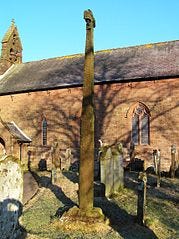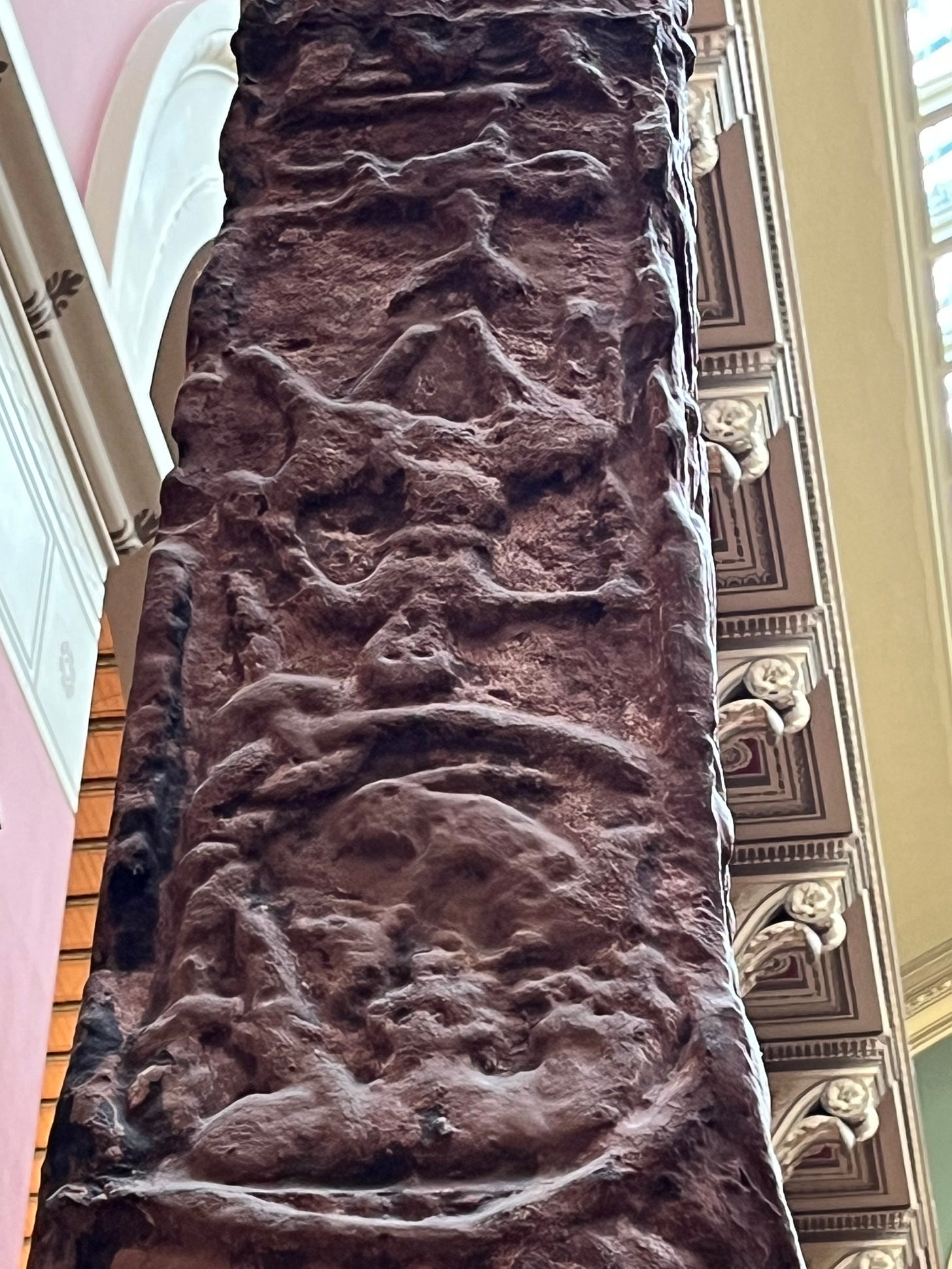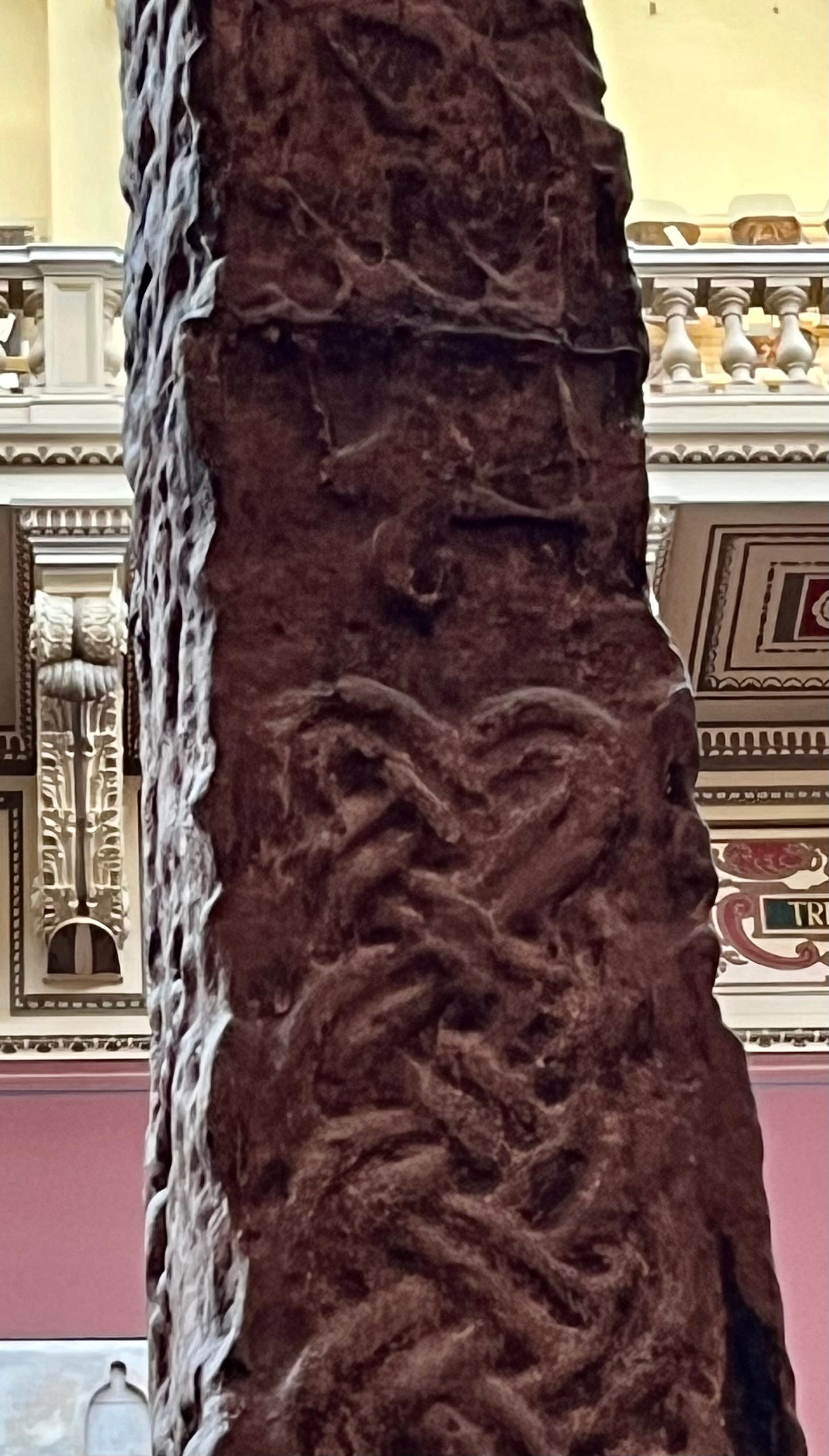The Gosforth cross stands in all its Norse splendour at over 14 feet tall in the churchyard of St Mary’s in Gosforth,Cumbria. It, not only towers above everything else within its vicinity, (except the church clearly,) but is remarkable in so many ways. Firstly that it has survived for over a thousand years, erect and more or less in tact; and it’s not especially Christian. Why do I mean by that?
Well, except for the pretty obvious cross on the top, its iconography is completely Norse! (If I wanted to be pedantic I could even argue that the cross having equal length arms, could in fact possibly represent a sun cross.) The carvings illustrate mythological scenes in a similar fashion to the Jelling Stones in Denmark. In 1886 Charles Parker was the first to thoroughly assess the carvings and proclaimed them as scenes from the Poetic Edda. Including:
Loki bound and his wife Sigyn holding a bowl to protect him from the serpent’s venom.
Heimdallir with Gjallahorn
And Viðarr in Fenrir’s jaws.
There is also some debate as to whether what was thought to be Christ is in fact the god Baldr.
Further, the base of the cross appears to be bark and branches symbolising Yggdrasil, the World Tree.
I was fortunate to visit the V&A’s plaster cast of the cross this week, and able to admire the carvings in all their detailed brilliance.
Also Inside the V&A’s incredible collection of plaster casts is a copy of the world famous Urnes Stave churches (Norway) wooden door and frame. This is life sized and details the complexity and expertise of the wood carvers over a thousand years ago.
If you have an hour or two to kill in London, I highly recommend visiting the impressive plaster cast gallery at the V&A’s museum.










Thank you to the reminder about the incredible collection at the V&A. I'm so rarely in London, and don't often have time to get to that museum, but it's a marvel.